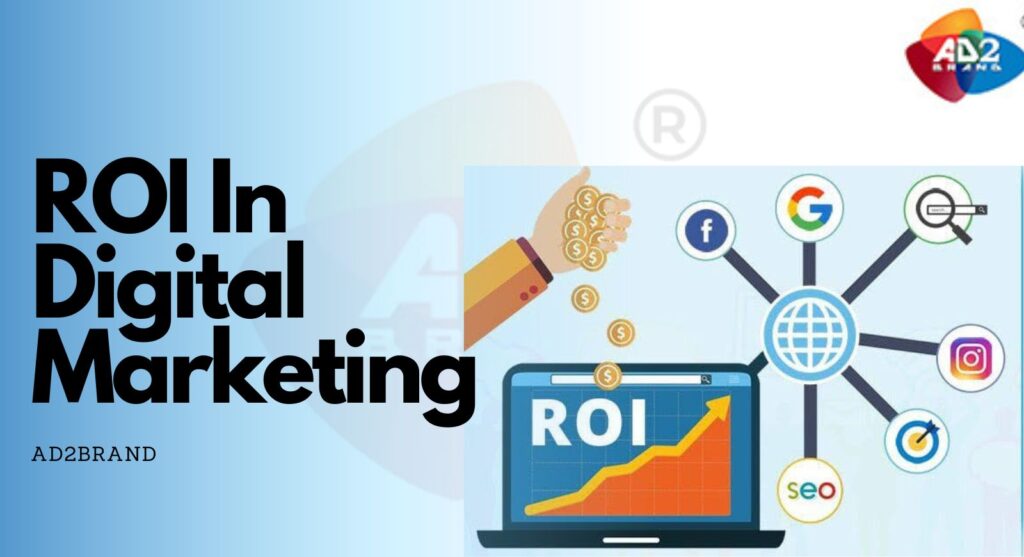Digital marketing isn’t a magical fix for your company’s marketing unless you keep an eye on it, track its performance, and make regular adjustments. One great way to see how well it’s working is by figuring out its return on investment, or ROI. After all, why spend money on fancy marketing if it’s not bringing in sales?
Having trouble with digital marketing? Reach out to us for help!
Understand How to Measure Digital Marketing
The rise of computers and the internet has opened up new ways for marketers to connect with customers online. As most people use smartphones, tablets, and laptops to access the web, digital marketing has become a crucial part of every business’s marketing plan.
In traditional marketing, success was often determined solely by increased revenue and sales resulting from a specific marketing piece, campaign, or strategy. There was little emphasis on analyzing the progress and results of marketing efforts. If sales went up, companies continued their marketing without making changes. If sales dropped, marketing managers would switch to something else.
Today’s marketers have the ability to measure the effectiveness of a campaign and calculate its return on investment (ROI). Calculating the ROI for your digital marketing efforts doesn’t require complex tools. Here is a simple ROI calculation and some essential factors to consider when measuring it.
Basic Formula of ROI in Digital Marketing
Wondering how to figure out if your digital marketing efforts are paying off? Return on investment (ROI) is a simple way to compare the profit gained from a campaign to how much it cost to create and run it. Ideally, you’d want a high ROI, meaning you’re getting more value than what you’re putting in.
Here’s the basic formula for calculating ROI: ROI=(Net ProfitTotal Cost)×100ROI=(Total CostNet Profit)×100
However, the ROI calculation won’t be useful if you don’t have clear goals, accurate numbers, measure the right key performance indicators (KPIs), or understand what you’re tracking. Let’s break it down in simpler terms.
Before diving into the calculation of a campaign’s ROI, there are crucial factors to keep in mind:
- Understand Your Objectives
- You aim to show your digital marketing strategies bring in revenue, but relying solely on ROI might not capture the full picture of success. Before deploying campaigns, clarify your unique marketing objectives. Not every aspect of your campaign directly translates into ROI. For example, lead generation and clicks are measurable but may not directly represent monetary value. By focusing only on revenue, you might overlook the true effectiveness of your marketing efforts.
- Identify Key Performance Indicators (KPIs)
- Your business is distinct, and your KPIs should mirror this individuality. Using KPIs from other organizations may provide irrelevant data. Tailor your KPIs to align with your specific market, location, and business goals for meaningful insights.
Understanding these aspects will ensure a more accurate and comprehensive assessment of your digital marketing success.
Essential Key Performance Indicators (KPIs) for Digital Marketing Success
Here are some common KPIs to help you gauge the effectiveness of your digital marketing efforts:
- Unique Monthly Visitors:
- Indicates how many people visited your website in a month. You can break down this metric by traffic sources like organic, paid, or social for more detailed insights.
- Cost Per Lead:
- Automatically calculated in Google Adwords, it reveals the expense incurred to acquire each lead.
- Cost Per Acquisition (CPA OR CAC):
- Shows the cost of acquiring customers, not just leads. Calculate it by dividing total marketing spend by the number of acquired customers.
- Return on Ad Spend (ROAS):
- Examines the profit generated through an ad compared to the total cost of creating it. Calculate it using the formula (revenue/total ad spend) *100.
- Average Order Value (AOV):
- Useful for e-commerce, B2B companies, and service-oriented businesses. Informs you about the value of each customer’s purchase.
- Customer Lifetime Value (LTV):
- Measures the overall value of your customers. Particularly valuable for e-commerce businesses.
- Lead-to-Close Ratio:
- Reveals the quality of leads handed over to the sales team and how effective the sales team is at closing leads. Helps calculate projected digital marketing ROI.
- Branded Search Lift:
- Tracks how many people specifically searched for your brand, indicating increased brand awareness over time.
- Average Position:
- Measures your website’s ranking in search results for targeted keywords. Higher rankings lead to more traffic, revenue, and ROI.
- Non-Brand CTR:
- Evaluates how well your SEO strategies performed by measuring click-through rates without directly marketing your brand. Google Search Console can calculate this metric.
Monitoring these KPIs will give you valuable insights into the success of your digital marketing endeavors.
- Ensure Your Data Collection Methods Are Clean: To measure your Key Performance Indicators (KPIs), it’s crucial to have a reliable data collection system. Any glitches or inconsistencies during data entry, collection, transfer, or calculation can skew your KPI and ROI numbers. Inaccurate KPIs hinder the assessment of how effective your digital marketing is in finding, attracting, and converting online customers. Before collecting data, identify the KPIs aligned with your marketing goals, ensuring your data collection software fits your budget and organizational needs. Establish a uniform data collection system accessible to both sales and marketing teams.
- Gain an Understanding of How Those KPIs Fit into the Bigger Picture: While the ultimate goal is to boost sales and ROI, focusing solely on ROI provides only a partial view of the broader digital marketing scenario. Although many KPIs may not directly correlate with increased ROI, patterns often emerge between them. For instance, an improved click-through rate and lower cost-per-customer might coincide with enhanced marketing ROI. Recognizing these interconnected relationships among KPIs is powerful for understanding the bigger digital marketing picture.
- Draw Insights from KPIs to Measure ROI: Explore how metrics like website traffic, cost-per-lead, search result rankings, and social media shares contribute to digital marketing ROI. While these KPIs individually indicate the effectiveness of your marketing efforts, their collective impact on ROI is profound. For example, engaging social media content can elevate brand recognition, leading to increased revenue and sales. Better website traffic and enhanced session duration, achieved through optimized content, contribute to an improved ROI. Trust and authority established through KPI-driven online engagement ultimately drive sales, subscriptions, and greater revenue, amplifying the ROI of your digital marketing endeavors.
Decoding Digital Marketing Success: Unveiling the Metrics for ROI
Digital marketing success is not just about the return on investment (ROI) numbers but understanding how key performance indicators (KPIs) play into the larger picture. Here’s a guide to what constitutes good ROI based on industry benchmarks, historical performance, and business models.
Industry Benchmarks: Depending on the KPIs you measure, industry benchmarks can provide insights tailored to your business. For instance, if you use Google Adwords, the average conversion rate hovers around 2.4 percent. The top performers hit a 5.3 percent conversion rate in the 25th percentile, and the top 10th percentile boasts an impressive 11.4 percent conversion rate.
Consider order values, too. Direct and search traffic, along with email marketing, tend to yield the highest order values. Social media, on the other hand, generally results in lower order values. Tools like MailChimp can help you understand benchmarks for email marketing conversion rates based on factors like company size, industry, unsubscribe rates, open rates, and click-through rates.
Historical Performance and Data: Reflecting on your company’s historical performance is crucial. Examine past ROI metrics and assess their relevance. Analyze spikes and dips in online marketing performance to diagnose what worked well and what didn’t. Your business model plays a role in determining the KPIs and ROI metrics relevant to assessing marketing efforts.
Considerations by Business Type: E-commerce:
- KPI metrics: Website traffic, social media engagement, newsletter subscribers, cart items
- ROI metrics: Sales revenue, transaction volume, average conversion rate, revenue, transactions, days to transaction, sessions to transaction, average order price, average sales price
Lead Generation:
- Leading metrics: Traffic to website, form conversions, webinar/event attendance, demos confirmed
- ROI metrics: Lead volume, cost per lead, lead conversion rate, lead quality, close rate
Content:
- Leading metrics: Traffic to website, click-through rates, average session duration, pages per session, community/social media engagement
- ROI metrics: Subscriptions to email lists, online newsletters, downloads, subscription length, article shares
While ROI is crucial, it’s not always the sole indicator of marketing success. Analyzing KPIs and their contribution to overall digital marketing improvement offers a more comprehensive view of your success.




